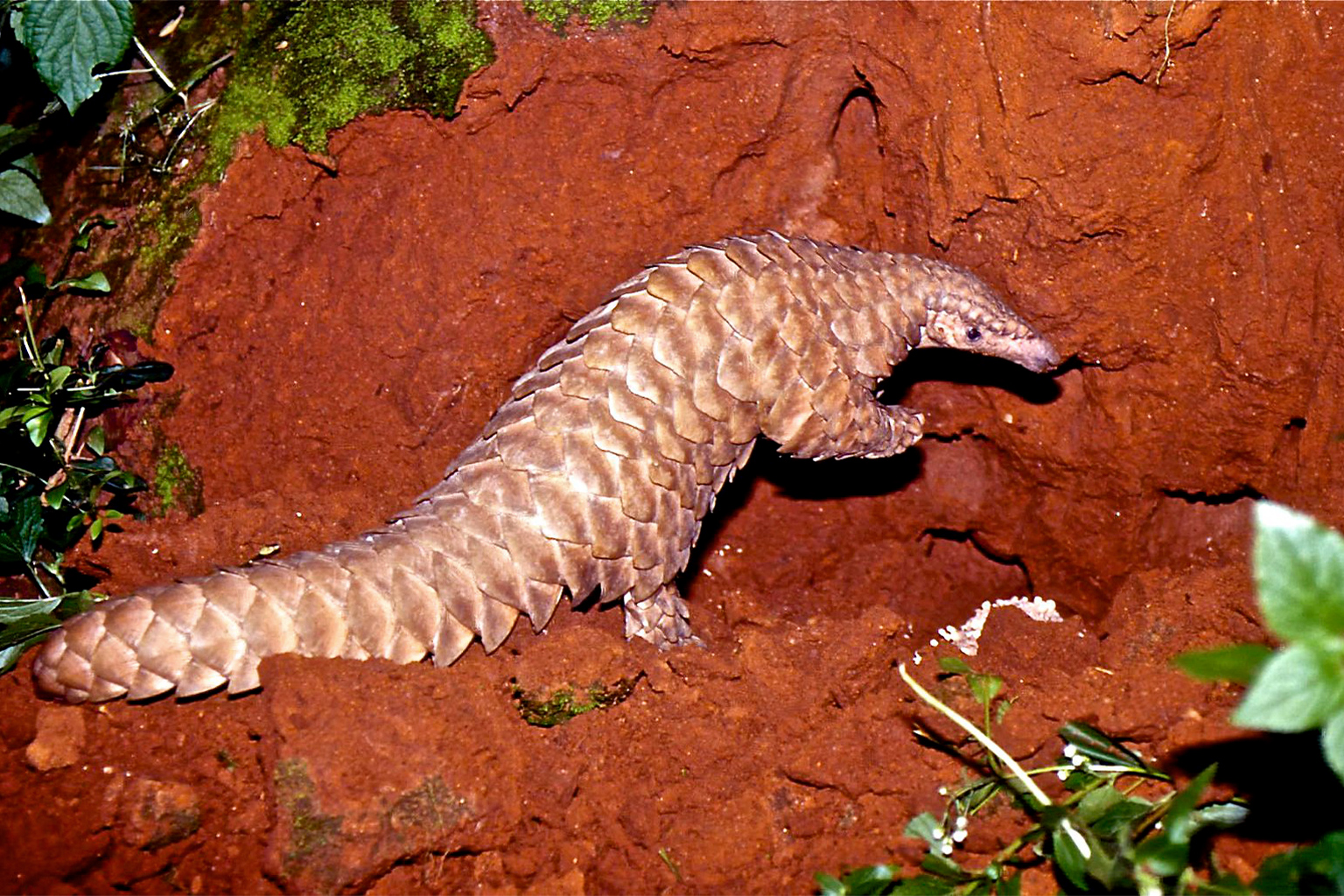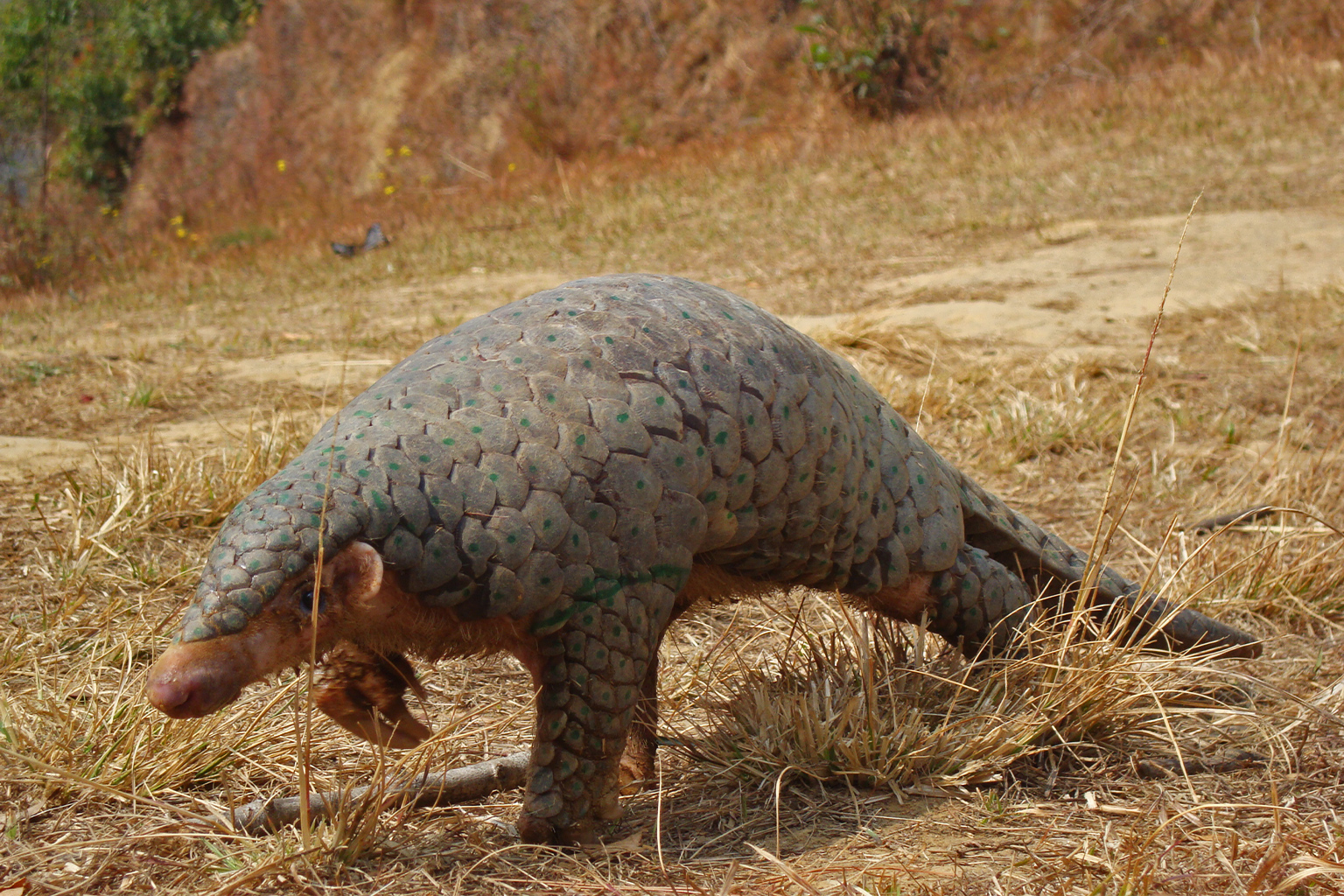- Tulshi Laxmi Suwal has been studying pangolins her whole career, and today sits on the specialist group for the scaly anteaters at the IUCN, the global wildlife conservation authority.
- Suwal’s native Nepal is home to two of the eight pangolin species, the Chinese and Indian pangolins, both of which are threatened because of demand for their meat, scales and other body parts.
- A survey led by Suwal of Indigenous and rural communities across Nepal found that while awareness about the animals remains sketchy and superstitions abound, most people say they’re willing to contribute to the species’ conservation.
- Key to achieving this are education and awareness campaigns as well as access to alternative livelihoods that get people to stop hunting wildlife to eat, Suwal says.
KATHMANDU — When Tulshi Laxmi Suwal was a student in the zoology department at Tribhuvan University in Nepal, she looked through an encyclopedia in search of interesting animals for her dissertation. That’s when she came across a scaly anteater. Pangolins immediately caught her attention. The more she read about these small mammals, the more she wanted to study them, especially after she discovered that two pangolin species were found in Nepal: the Chinese pangolin (Manis pentadactyla) and the Indian pangolin (Manis crassicaudata).
But convincing her professors to allow her to study this nocturnal animal that lives in burrows wasn’t easy. According to them, she would never find a live pangolin. Doing so would require her to visit habitats at night, and as a woman, it would be almost impossible for her to do so, they said. However, she persevered. Despite the paucity of previous studies and data on the animal, which are often mistaken for reptiles because of their scales, she not only completed her dissertation on pangolins in the region, but recently completed her Ph.D. studying what’s become known as the “most trafficked mammals in the world.”
Now a member of the pangolin specialist group at the IUCN, the global wildlife conservation authority, Suwal has studied different aspects of pangolin conservation in Nepal extensively.
Due to high demand for their meat and scales in China and other Asian nations, for consumption and for use in traditional medicine, all eight species of pangolin found in the world today are threatened, according to the IUCN.

At least 23.5 metric tons of pangolins and their parts were trafficked in 2021 alone, according to data from TRAFFIC, a wildlife trade monitoring network. Conservationists don’t have an estimate of how many pangolins survive in the world today. However, in 2011, an estimate put the population of Chinese pangolins in Nepal at around 5,000 individuals.
To gain a better understanding of Indigenous local beliefs and incentives that drive the consumption and trade of the species, and determine people’s willingness to support conservation activities, Suwal surveyed 1,017 people from 105 villages and Indigenous communities across different ecological regions throughout Nepal.
Compiled in a study published last year in the Journal of Ethnobiology, Suwal says the findings offer an important baseline to help design and execute more effective community-based conservation strategies and management decisions for pangolin conservation.
Mongabay’s Abhaya Raj Joshi met Tulshi Suwal in Kathmandu to discuss what her findings reveal about human-pangolin relations in Nepal. The interview was conducted in Nepali and has been translated and edited for clarity.
Mongabay: Could you please briefly tell us how the idea of this study came about?
Tulshi Laxmi Suwal: As part of my Ph.D. work, I was looking at three different aspects of pangolin conservation in Nepal. I first prepared a model, based on data related to sightings, indirect signs, seizure of body parts where they might be found in the future. Secondly, I studied 282 pangolins rescued and brought to the Pingtung Rescue Center for Endangered Wild Animals at National Pingtung University of Science and Technology, Taiwan, to observe the length, breadth and thickness of different parts of their body. The idea was to help develop guidelines for rescuers in Nepal to determine whether a rescued pangolin was healthy or not based on its external features.
The third part of the research was to look at the human dimensions of pangolin conservation in Nepal. I had three main objectives for the study: to assess the people’s awareness about conservation, their knowledge about the use of its body parts, and their willingness to contribute toward the conservation of these animals in the country.
The study you mention covers the third objective. As part of the study, we conducted a semi structured questionnaire survey of 1,017 people from 105 villages located in different ecological regions across all seven provinces of the country.

Mongabay: Could you please tell us about the first objective, to assess the people’s awareness about conservation?
Tulshi Laxmi Suwal: During our survey, we found that around 60% of the people had seen a pangolin and were aware the animal existed. However, they didn’t know about their habitat, their benefits to the environment, or their feeding habits.
The people we surveyed in eastern and central Nepal were relatively more aware about pangolins and the need to conserve them, compared to their counterparts in the western part of the country. Maybe this is because most of the conservation activities as well as research into the animals have focused on these regions. This shows that we need to focus our attention on the western front as well.
Mongabay: What are some of the superstitions people have related to pangolins, and the misinformed use of their body parts?
Tulshi Laxmi Suwal: We found that pangolin meat and scales are widely used in local traditional medicine, [especially by Indigenous communities], despite no evidence to support its medicinal properties.
We found that people harbor a superstition that eating pangolin meat helps them cure ailments related to the liver and kidneys. Some also believe that nursing mothers can get a lot of energy from consuming the meat. We met one man near Kathmandu a few months ago who said that he eats pangolin meat to treat hemorrhoids.
We came across some beliefs that a piece of pangolin scale can ward off evil spirits. For example, we met a woman who wrapped a piece of the scale in a cloth and kept it under her baby’s pillow to ward off evil spirits. In some places, people wore the scales as rings. When we asked them the reason, they said it can help detect poison in food. If there’s poison in the drink, especially alcohol, the scale changes its color, they said. Some kept the scales in their lockers to bring good luck and more cash into the house. One community used fat from the animal to cook offerings to the gods. All these things are based on superstitions and there’s no evidence that these claims are correct.
Most of the time, the animal is associated with good luck, but there are instances when they are related to bad omens. For example, some people told us that if they see the animal under the light of a full moon, they get bad luck for a few days. Maybe it’s because they move about in a peculiar way, rustling the leaves on their path and rolling up into a ball if they encounter any disturbance. This is frightening for some people.

Mongabay: Did any of the locals interviewed take part in the international trade of the scales?
Tulshi Laxmi Suwal: During the course of our study, we didn’t come across anyone who sells the scales internationally. But some villagers told us that hawkers from India who come to the villages to sell bangles and textiles ask to see if anyone has caught a pangolin. They offer about 4,000-5,000 rupees [$30-$40] for each pangolin. The money doesn’t seem to be that significant, but for people in villages, it can be used to buy alcohol, food for the children, or even a meal or two.
Mongabay: Were there local people and Indigenous communities willing to help conserve the pangolins?
Tulshi Laxmi Suwal: Around 71% of the people we talked to said they were willing to help conserve the animals as they are nonviolent animals that don’t cause harm to people or their livestock in any way. They eat the ants and mites that would otherwise trouble humans.
But on the other hand, they need some sort of incentives or motivation to help conserve pangolins. In the villages where pangolins are found, most of the well-off families, usually from the higher castes, have moved out to urban areas in search of better income and livelihoods. The ones who remain are marginalized Indigenous people who are often uneducated and unemployed. They face hardships due to limited productivity of hilly land. We also found that the people have more than two or three children on average, despite the hardships.
When people have nothing to eat, they eat whatever they get around them, including wild animals and plants.

Mongabay: How can we go about providing incentives to local communities to conserve pangolins?
Tulshi Laxmi Suwal: First is education and awareness, and second is alternative sustainable livelihoods. When people are educated, they have better economic prospects and don’t need to kill wild animals.
Also, we need to include more topics and issues related to the environment in the school curriculum so that students are aware of the tremendous biodiversity of Nepal. When they become responsible citizens, they can continue efforts to save biodiversity.
Similarly, sustainable alternative livelihoods that make use of the resources around them can go a long way in helping communities financially as well as conserving pangolins. For example, we can train communities to use leaves found in the jungle to make degradable plates. This also helps prevent forest fires and improves pangolin habitats in the long run. We need to adopt this approach not just for pangolins, but also for the environment and wildlife in general.
Banner image: Tulshi Laxmi Suwal is a member of the pangolin specialist group at the IUCN. Image courtesy of Tulshi Laxmi Suwal.
Citations:
Suwal, T. L., Gurung, S., Shrestha, M. B., Ingram, D. J., & Pei, K. J. (2022). Human dimensions of pangolin conservation: Indigenous and local knowledge, ethnozoological uses, and willingness of rural communities to enhance pangolin conservation in Nepal. Journal of Ethnobiology, 42(3). doi:10.2993/0278-0771-42.3.7
Suwal, T. L., Thapa, A., Gurung, S., Aryal, P. C., Basnet, H., Basnet, K., … Pei, K. J. (2020). Predicting the potential distribution and habitat variables associated with pangolins in Nepal. Global Ecology and Conservation, 23, e01049. doi:10.1016/j.gecco.2020.e01049
Suwal, T. L., Chi, M., Tsai, C., Chan, F., Lin, K., & Pei, K. J. (2022). Morphometric relationships, growth and condition factors of critically endangered Chinese pangolin (Manis pentadactyla). Animals, 12(7), 910. doi:10.3390/ani12070910
Feedback: Use this form to send a message to the author of this post. If you want to post a public comment, you can do that at the bottom of the page.
